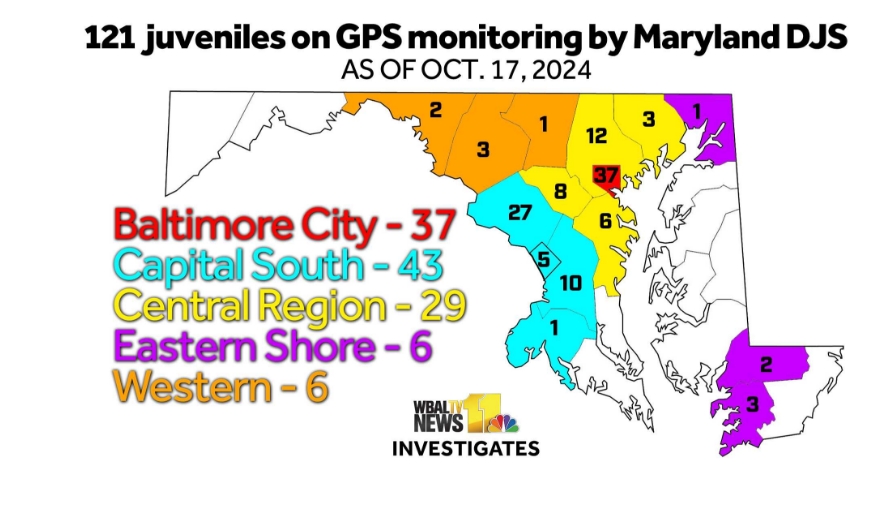Please Follow us on Gab, Minds, Telegram, Rumble, GETTR, Truth Social, Twitter
UPDATE: Today, the Maryland State Board of Education unanimously voted to adopt policy changes requiring school officials to share certain information from students’ criminal records with one another. The revised policy requires local superintendents to forward information about students charged or convicted of “reportable offenses” — certain serious offenses that happen outside school — to education officials in other school districts when the student transfers between schools. Previously, communication between different school districts was optional. As an emergency policy, it can take effect prior to public comment.
Legislative approval is needed for the regulation to take effect, and the state school board has requested that it start Tuesday and run through April 20, 2025. The state’s Joint Committee on Administrative, Executive and Legislative Review can also adjust the dates when the regulation is in effect. - The article on this vote can be found at the Baltimore Sun: Maryland board votes to change policy on students' criminal records
It's been a rough first semester in the Maryland Public School system. Three counties, Harford, Howard, and Baltimore were recently in the headlines because of suspected and even convicted juvenile murderers walking the halls with everyday students; students who didn't know who was in class with them. A rapist had been in Baltimore City Public Schools last year.
Parents and families didn't know. And it has caused a lot of concern in the public.
The incident in Baltimore City involved a child rapist who was attending Patterson High School after a judge had ordered him to have “no unsupervised contact with children under 15.” Parents found out and a local television affiliate, Fox 45, broke the story. After the report, Maryland legislators acted quickly to prevent that situation from happening again.
Last Fall, an illegal immigrant member of the MS13 gang who had been accused of killing a woman in 2022 was attending a Harford County High School. He had been placed in the home where the woman was killed and then after being designated as a primary suspect, was enrolled in a public school. The placement was done by Child Protective Services. He was convicted in August and is presently in jail.
Did A Violent, MS-13 Murderer Attend The Harford County Public Schools? - Easton Gazette
Again this Fall, a 16-year-old killed a 15-year-old in the bathroom of Joppatown High School. The 16-year-old had been on the radar of county police for a while and entered the school with a gun.
Now, Howard County, a system that rates in the top of school systems in Maryland, has also had violent juveniles in the schools.
The student had an ankle monitor for a previous charge of attempted murder. He was arrested at Howard High School and had a loaded gun which was altered to be semi-automatic. The Superintendent of the Howard County School system, Bill Barnes, claimed he had no knowledge that the 17-year-old was attending Howard High. If he had, Barnes said, he would not have allowed the placement.
Parents in the system had many questions. How did this happen? Why didn't the county schools know about the situation? Why wasn't the student on virtual instruction instead of attending in person at Howard High? Who is responsible for this situation?
Most important, how many other violent criminals are sitting in school next to their children? Howard County alone has 48 students who have committed "reportable offenses" attending their schools in person.
As to who is responsible, many are pointing the finger at the State's Secretary of Juvenile Services, Vincent Schiraldi. Schiraldi, a longtime friend of Governor Wes Moore, was appointed to the post when Moore was elected. He has a controversial past that includes a two-year misconduct investigation launched in June 2008 by the Washington, D.C. Office of the Inspector General (OIG) regarding his management of the city’s Department of Youth Rehabilitation Services (DYRS). He was found guilty of five agency policy sections of the Department.
Schiraldi moved to New York City after that where he worked with the Bloomberg administration as the head of the New York City Department of Corrections. There were many lapses in his leadership of the department, and correctional offices complained about lack of adequate supervision and accountability.
After coming to Maryland, Schiraldi published a book titled “Mass Supervision: Probation, Parole and the Illusion of Safety and Freedom.” He proposed getting rid of parole and probation – gradually and carefully over a few years – and engaging communities in supporting and providing services to people who have broken the law, and having them receive those services in their own communities.”
Does that include sitting in high school classrooms? Many parents are concerned that it does. Many have called for Schiraldi's resignation. Stubbornly, he says he will not resign. He, like former State Superintendent of Schools Mohammad Choudhury, ran from FOX Channel 45 when they attempted to interview him about the complaints regarding juvenile justice. Seems to be a new tactic by state appointees. Choudhury, of course, has since left Maryland.
According to sources, when a juvenile is arrested and brought to the Department of Juvenile Services, they are assessed as a risk to the community. Factors such as parental support, previous record and community support are considered by judges who ultimately make the decision of where a juvenile will go. Those who are determined to need monitoring are given ankle monitors and sent home.
Altogether, 121 juveniles are under CPS monitoring in the state. This graphic from WBAL TV shows the distribution:

Link to WBAL TV: 11 News Investigates examines DJS juvenile-monitoring process
According to DJS, most of these subjects don't cause problems or commits further crimes.
Many community leaders disagree and are demanding Schiraldi's removal from his post.
DJS secretary's ouster sought after teen charged with murder
Vincent Schiraldi's controversial past sparking whistleblowers, calls for federal probe
In 2024, Maryland has seen a significant number of reportable offenses committed by juveniles. According to recent data, there have been over 12,363 juvenile crime complaints1. This marks a notable increase from previous years.
Others are calling on the State to cooperate more with local school systems and to assure that violent students are not roaming the public-school hallways.
Multiple failures led to MS-13 murder suspect attending Maryland schools, official says
Amy Adams with the Baltimore County Parent and Student Coalition sent a letter to Baltimore County House Delegates demanding action when it comes to policy and procedure surrounding communication regarding juvenile offenders in school.
“It just seems like there's a lot of systems that failed in that situation,” Adams said Thursday.
The letter said Gov. Wes Moore’s “promise to address juvenile gun violence” hasn’t resulted in tangible action, “leaving us with empty words and a growing body count.”
“We cannot afford to avert our eyes from this crisis any longer. Our children deserve real solutions, not meaningless promises,” the letter continued.
Adams said so far, the lawmakers have yet to respond to the letter. But the effort to urge school board members to talk to the delegation about addressing these communications gaps– especially before the General Assembly begins in January – remains a priority, Adams said.
“We want our kids to feel safe in school,” she said. “We want our teachers to be safe in school and we want them to learn and focus on learning.”1
These concerns and others are increasing as an effect of the recent juvenile crime reform bills passed by the Maryland Legislature in 2023. Although children aged 10 to 12 can now be charged with certain crimes such as illegal gun possession, auto theft, harming animals and sex offenses, many think the juvenile justice system does not have significant consequences for kids who commit crimes and their parents. And there is a huge concern that juvenile offenders still end up in public schools without notification of staff.
Meanwhile, many parents and students in Maryland are unaware of the danger that could be present in their schools. Does Governor Moore have that concern regarding his own children? No one knows. He won't say if his kids attend private or public school.
His lack of a response may be the answer to both of those questions.
One thing is clear, he has no intent to ask Schiraldi to resign despite his failures and possible corruption. One wonders what Schiraldi, a friend of Moore's, knows that keeps him safe.
According to statistics, none of the Maryland Mid-Shore public school systems have this concern over juvenile offenders in schools.
